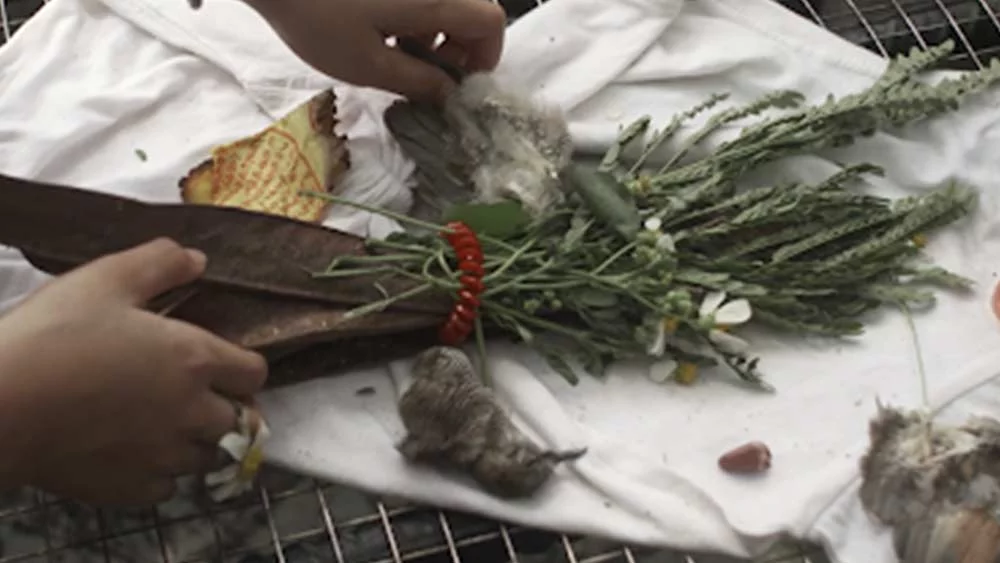A Modern Push; An Inevitable Traditional Pull is ‘Posterity’
By Syaza Agape

An elusive clanking opens Audrie Yeo’s Posterity. The unnerving but intentional zoom in over a dimly lit altar follows, setting the bleak yet spiritual undertone of the film. Bold red walls fill the frame, as the camera hangs on a lady bidding respect to what seems to be a late relative. Yeo uses strong imagery such as joss sticks atop cockles as well as the timely crescendo of sound to ease the tension.
Posterity does not shy away from embracing the innovations of tradition, all whilst being at odds with the restricting premise of tradition itself. Protagonist Ah Ger represents modernity; first indicated from her youth, to her autonomy when faced with a dismembered bird laid out in front of her. She adopts a non fearful approach to the dead bird and rescues it, almost as if she has greater plans ahead for the carcass.
Ah Ger goes through great lengths to gather offerings of her choice to create a memorial for the bird. Early in the film, she encounters offerings set underneath a tree she wishes to retrieve branches from. Yeo is bold in her choice to have Ah Ger nonchalantly eat one of the jelly offerings, followed shortly by another. This very act is symbolic of the rejection of past rituals, in favour of new ones.
The main juxtaposition within Posterity happens when Ah Ger encounters her late grandmother. The moment when the two meet is purposeful. Ah Ger in the midst of her new found ritual, soon gets distracted by the sound of whimpering off screen, almost as if she is trying to adopt a new practice but the shackles of tradition keep pulling her back.

Thematically, Posterity tackles various interwoven themes such as Modernity vs Tradition and also Life vs Death. The film does seem to favour a more progressive perspective. One can infer that Ah Ger was able to have a visual encounter with her late grandmother due to her own repurposed ritual. In contrast, the lady we see at the start of the film, later revealed to be Ah Ger’s mother, has her own passed down ritualistic practices, yet is still distant from Ah Ger’s grandmother. The film seems to validate Ah Ger’s embrace of progressive practices as the reappearance of the spirit of her late grandmother relied upon it.
The end of the film leaves us where it began– confined within red four walls, before an altar. As an audience, we resonate with Ah Ger and the constraint she faces. As her mother hurls sharp words that insist on the observance of old rituals, the ending could not have been more profound. The film’s resolution sets a realistic tone– the inevitable push and pull between generations. Forefathers wanting their offspring to preserve whatever form of “tradition” or “practices” that slowly gets reworked and chipped away as time passes. The tension comes in the form of youth craving some sort of progression, yet still filial to the roots they started from.
Yeo leaves us with a lingering thought– how much of these beliefs we have are truly our own, and how hard do we have to fight to form new practices?